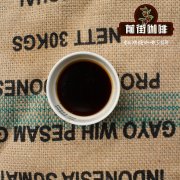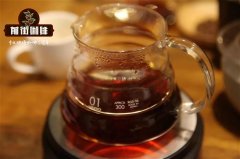The process of cup testing how to measure coffee cup measuring process of coffee cup

Professional coffee knowledge exchange more coffee bean information please follow the coffee workshop (Wechat official account cafe_style
Process-now that you have the equipment, what do you do with these things?
Make sure you've collected everything you need! Cup testing can be casual, but some steps are time-sensitive, so getting ready will help everything go smoothly.
Weigh your coffee into the bowl / cup you plan to use. It's important to know your vascular volume, because proportional consistency is important-60g/L is a ratio, and you'll hear many professionals use it in their regular stools.
Heat the water and grind the coffee. Grind a small amount of coffee before grinding the dose you want to sample. This reduces the chance of cross-pollination between coffee and coffee. Grind the coffee in the place you use to filter it, or just a little rougher, which can help your coffee avoid being overextracted too quickly in the cup.
Pour the coffee grounds into the cup.
Smell your dry coffee grounds. Perfume can be an interesting insight that may be waiting for your taste buds!
Start the timer and pour hot water (208 °F / 97 °C) into each sample. Fill each container and try your best to saturate all the coffee grounds instead of spilling them out of the cup test.
Check your sample carefully again. The difference between the aroma of dry coffee and the aroma it emits now may be huge!
Spooning the bowl, the Gibraltarians broke the crust.
When your timer reaches 4 minutes, give each sample a stir to break the upper shell. Use a consistent stirring pattern from one cup to another (for example, stir 3 times clockwise) and be sure to wash your spoon between each sample.
This is the last great chance to test the fragrance. When you break the shell, there will be a sense of olfactory explosion, because volatile aromatic hydrocarbons finally have a chance to escape into the air.
With two spoons, skim the coffee grounds / foam from the top of your sample.
Wait patiently. Now is a good time to prepare fresh rinse water for your spoon, drink some water, or take a picture to show off to your friends online.
Two cup spoons skimming the cup
Stay on the timer for about 14 minutes and the sample should be cold enough to start tasting. Pour a small amount of coffee on the spoon and sip dry. The act of drinking coffee doesn't need to be exaggerated, because it's just to spray coffee on your taste buds to help you taste it better. For those who are afraid of the sound of drinking coffee, swishing coffee on your taste buds can replace the standard noise.
Continue tasting and taking notes until the coffee sample begins to approach room temperature (usually about 20 to 25 minutes, depending on the container).
Reflect and talk to your cupping partner about coffee! Sharing your notes and listening to other people's impressions of the same kind of coffee can be a source of great insight, especially because everyone's feelings and memories can change so much. It is generally believed that it is polite to maintain your thoughts and reactions before the end of the cup test, which ensures that you will not accidentally affect the opinions of others and that everyone will have a fair sensory experience.
END
Important Notice :
前街咖啡 FrontStreet Coffee has moved to new addredd:
FrontStreet Coffee Address: 315,Donghua East Road,GuangZhou
Tel:020 38364473
- Prev

What do you need to prepare for the cup test? what equipment do you need for the coffee cup test?
Professional coffee knowledge exchange more coffee bean information please follow the coffee workshop (Wechat official account cafe_style equipment everything you need to succeed. Coffee (of course) you only need a little coffee (about 25 grams). The cup test works best as a taste exercise when you have all kinds of coffee to compare. There are at least two cups of coffee around, but preferably 3-
- Next

Is Red Prospect Coffee good? red Prospect Rose Summer Coffee drink French Red correctly look forward to Rose Summer
Professional coffee knowledge exchange more information about coffee beans please follow the coffee workshop (Wechat official account cafe_style Perci Red is a natural Gesha coffee from 90 Gesha estates in Volgan, Panama. It is the sister of "Gesha" and "Lycello" that we washed. It has all the jasmine, lemon, tea and milk chocolate you've tasted in the cello.
Related
- Beginners will see the "Coffee pull flower" guide!
- What is the difference between ice blog purified milk and ordinary milk coffee?
- Why is the Philippines the largest producer of crops in Liberia?
- For coffee extraction, should the fine powder be retained?
- How does extracted espresso fill pressed powder? How much strength does it take to press the powder?
- How to make jasmine cold extract coffee? Is the jasmine + latte good?
- Will this little toy really make the coffee taste better? How does Lily Drip affect coffee extraction?
- Will the action of slapping the filter cup also affect coffee extraction?
- What's the difference between powder-to-water ratio and powder-to-liquid ratio?
- What is the Ethiopian local species? What does it have to do with Heirloom native species?

